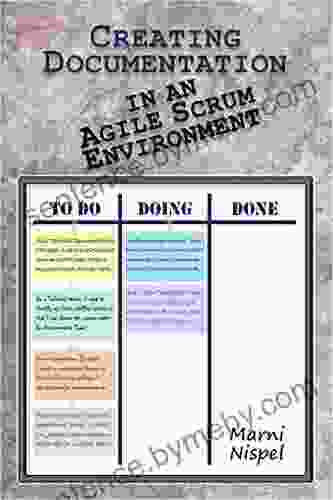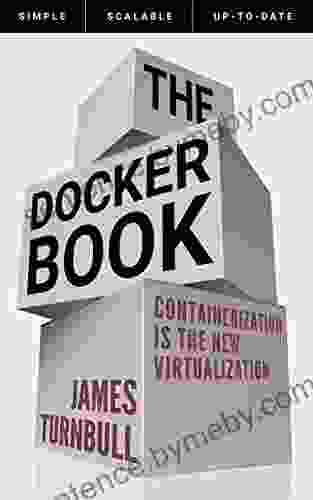Creating Documentation In An Agile Scrum Environment: A Comprehensive Guide

In today's fast-paced and ever-changing software development landscape, documentation often takes a back seat to coding and feature development. However, in an Agile Scrum environment, where collaboration, transparency, and continuous improvement are paramount, documentation plays a crucial role in ensuring the success of your project.
4.5 out of 5
| Language | : | English |
| File size | : | 1744 KB |
| Text-to-Speech | : | Enabled |
| Enhanced typesetting | : | Enabled |
| Print length | : | 152 pages |
| Lending | : | Enabled |
| Screen Reader | : | Supported |
This comprehensive guide will explore the ins and outs of creating documentation in an Agile Scrum environment. We'll cover best practices, tools, and techniques to help you effortlessly create and maintain documentation that supports your team's needs and contributes to the overall success of your project.
Why Is Documentation Important in Agile Scrum?
Documentation is essential in an Agile Scrum environment for several reasons:
- Collaboration and Communication: Documentation serves as a central repository of information, facilitating collaboration and communication among team members, stakeholders, and users. It ensures that everyone has access to the latest and most accurate information, reducing misunderstandings and misinterpretations.
- Transparency and Visibility: Documentation provides visibility into the project's progress, goals, and decisions. It helps stakeholders understand the project's context, scope, and timeline, enabling them to make informed decisions and provide valuable feedback.
- Knowledge Transfer: Documentation captures and preserves knowledge, making it easier for new team members to quickly get up to speed and for experienced members to share their expertise. It facilitates knowledge transfer and ensures that institutional knowledge is not lost when team members leave the project.
- Continuous Improvement: Documentation supports continuous improvement by providing a record of lessons learned, best practices, and areas for improvement. It helps teams identify patterns, analyze trends, and make informed decisions to enhance their processes and deliver better outcomes.
- Compliance and Governance: Documentation may be required for compliance with industry regulations or internal policies. It provides evidence of the project's processes, decisions, and outcomes, helping organizations meet their legal and ethical obligations.
Best Practices for Agile Scrum Documentation
Here are some best practices for creating effective documentation in an Agile Scrum environment:
- Make it Lightweight: Agile documentation should be concise, clear, and easy to understand. Avoid jargon and technical details that may not be relevant to all readers. Focus on providing just enough information to convey the essential message.
- Keep it Agile: Documentation should evolve as the project progresses. Use tools and techniques that allow for easy updates and revisions. Embrace the iterative nature of Agile and make changes as needed to reflect the latest project status and decisions.
- Collaborate and Involve Stakeholders: Involve team members, stakeholders, and users in the documentation process. Seek their feedback and incorporate their perspectives to ensure that the documentation meets their needs and provides value.
- Use Visuals and Diagrams: Visuals and diagrams can help make complex information more accessible and easier to understand. Use charts, graphs, flowcharts, and other visual aids to convey information in a clear and engaging way.
- Automate Documentation: Explore tools that can automate the generation of certain types of documentation, such as API documentation or release notes. Automation can save time and ensure consistency, freeing up your team to focus on higher-value tasks.
Tools for Agile Scrum Documentation
There are several tools available to support Agile Scrum documentation, including:
- Wikis: Wikis are collaborative platforms that allow teams to create, edit, and share documentation. They provide an easy way to capture and organize information, and they can be accessed by multiple users simultaneously.
- Project Management Software: Many project management software tools offer documentation features, such as document storage, version control, and collaboration tools. These tools can help teams manage and track their documentation.
- Documentation Generators: Documentation generators can automatically generate documentation from source code or other artifacts. This can save time and ensure that documentation is always up-to-date with the latest changes.
- Markdown Editors: Markdown editors provide a simple and lightweight way to create and format documentation. They support Markdown syntax, which is easy to learn and use, and they can be used to create a variety of document types.
- Diagramming Tools: Diagramming tools help teams create visual representations of complex information, such as flowcharts, UML diagrams, and mind maps. These tools can be used to illustrate processes, designs, and other concepts.
Creating documentation in an Agile Scrum environment is essential for collaboration, transparency, knowledge transfer, continuous improvement, and compliance. By following best practices, using the right tools, and involving stakeholders, teams can create and maintain effective documentation that supports their project's success.
Remember, documentation is not a static artifact; it should evolve as the project progresses. Embrace the iterative nature of Agile and make changes to your documentation as needed to reflect the latest project status and decisions. By keeping your documentation lightweight, agile, and visually appealing, you can ensure that it provides value to your team and contributes to the overall success of your project.
4.5 out of 5
| Language | : | English |
| File size | : | 1744 KB |
| Text-to-Speech | : | Enabled |
| Enhanced typesetting | : | Enabled |
| Print length | : | 152 pages |
| Lending | : | Enabled |
| Screen Reader | : | Supported |
Do you want to contribute by writing guest posts on this blog?
Please contact us and send us a resume of previous articles that you have written.
 Book
Book Novel
Novel Page
Page Chapter
Chapter Text
Text Story
Story Genre
Genre Reader
Reader Library
Library Paperback
Paperback E-book
E-book Magazine
Magazine Newspaper
Newspaper Paragraph
Paragraph Sentence
Sentence Bookmark
Bookmark Shelf
Shelf Glossary
Glossary Bibliography
Bibliography Foreword
Foreword Preface
Preface Synopsis
Synopsis Annotation
Annotation Footnote
Footnote Manuscript
Manuscript Scroll
Scroll Codex
Codex Tome
Tome Bestseller
Bestseller Classics
Classics Library card
Library card Narrative
Narrative Biography
Biography Autobiography
Autobiography Memoir
Memoir Reference
Reference Encyclopedia
Encyclopedia Jayne Calvin
Jayne Calvin Janice K Ledford
Janice K Ledford James Thurber
James Thurber Jay Sankey
Jay Sankey Sara Blakely
Sara Blakely James M Boles
James M Boles Jane R Hirschmann
Jane R Hirschmann Janet G Covey
Janet G Covey Janet Stevens
Janet Stevens Mike Tidwell
Mike Tidwell Jo Toye
Jo Toye Leora Lazarus
Leora Lazarus Mary Scott Huff
Mary Scott Huff Janice Celeste
Janice Celeste Janet Schulman
Janet Schulman Kicki Hansard
Kicki Hansard Jason Cranford Teague
Jason Cranford Teague Jayne Shrimpton
Jayne Shrimpton Oliver Laasch
Oliver Laasch Philip Gerard
Philip Gerard
Light bulbAdvertise smarter! Our strategic ad space ensures maximum exposure. Reserve your spot today!
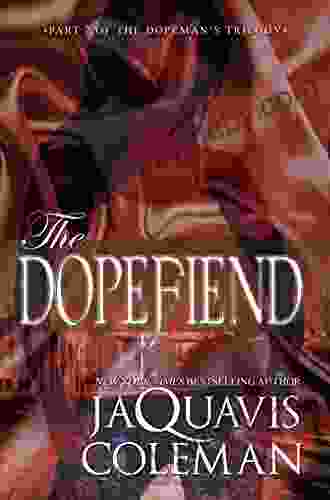
 Edward ReedPart of the Dopeman Trilogy: The Dopefiend Trilogy - A Riveting Exploration...
Edward ReedPart of the Dopeman Trilogy: The Dopefiend Trilogy - A Riveting Exploration...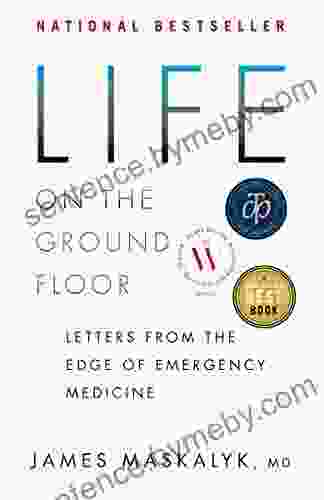
 Jordan BlairLetters From The Edge Of Emergency Medicine: A Riveting Account of Life on...
Jordan BlairLetters From The Edge Of Emergency Medicine: A Riveting Account of Life on... Jesse BellFollow ·19.7k
Jesse BellFollow ·19.7k Will WardFollow ·10.8k
Will WardFollow ·10.8k Michael ChabonFollow ·17k
Michael ChabonFollow ·17k Camden MitchellFollow ·15.4k
Camden MitchellFollow ·15.4k Walt WhitmanFollow ·10.9k
Walt WhitmanFollow ·10.9k John GreenFollow ·2.4k
John GreenFollow ·2.4k Edgar HayesFollow ·12k
Edgar HayesFollow ·12k Leon FosterFollow ·8.7k
Leon FosterFollow ·8.7k

 Franklin Bell
Franklin BellHow Businesses Can Thrive In The New Global Neighborhoods
The world is becoming...
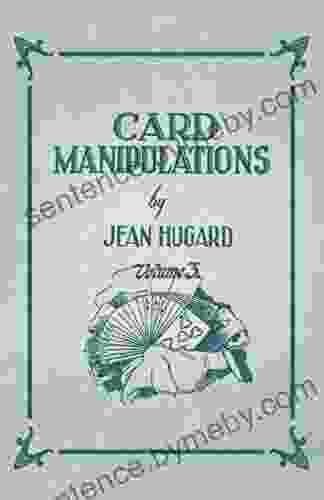
 Rob Foster
Rob FosterCard Manipulations Volume 1: A Masterclass in Deception...
Unveiling the...
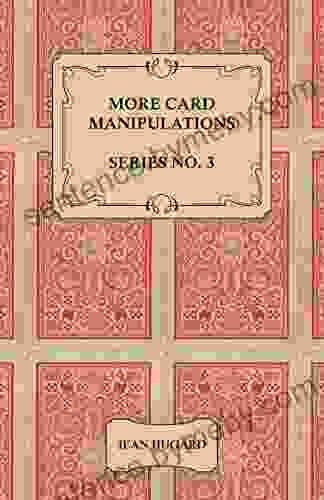
 Enrique Blair
Enrique BlairUnveil the Secrets of Card Manipulation: Dive into "More...
Step into the captivating world...

 Jamal Blair
Jamal BlairComedy Fillers 200 Quips One Liners Jean Hugard
Unlock the Secrets of...

 Chase Simmons
Chase SimmonsUnlock Financial Independence: A Comprehensive Guide to...
In a world where financial security seems...
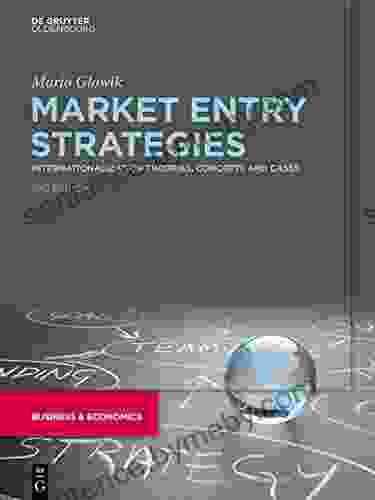
 Dion Reed
Dion ReedUnveiling Global Market Entry Strategies: A Comprehensive...
Global Market Entry Strategies:...
4.5 out of 5
| Language | : | English |
| File size | : | 1744 KB |
| Text-to-Speech | : | Enabled |
| Enhanced typesetting | : | Enabled |
| Print length | : | 152 pages |
| Lending | : | Enabled |
| Screen Reader | : | Supported |


